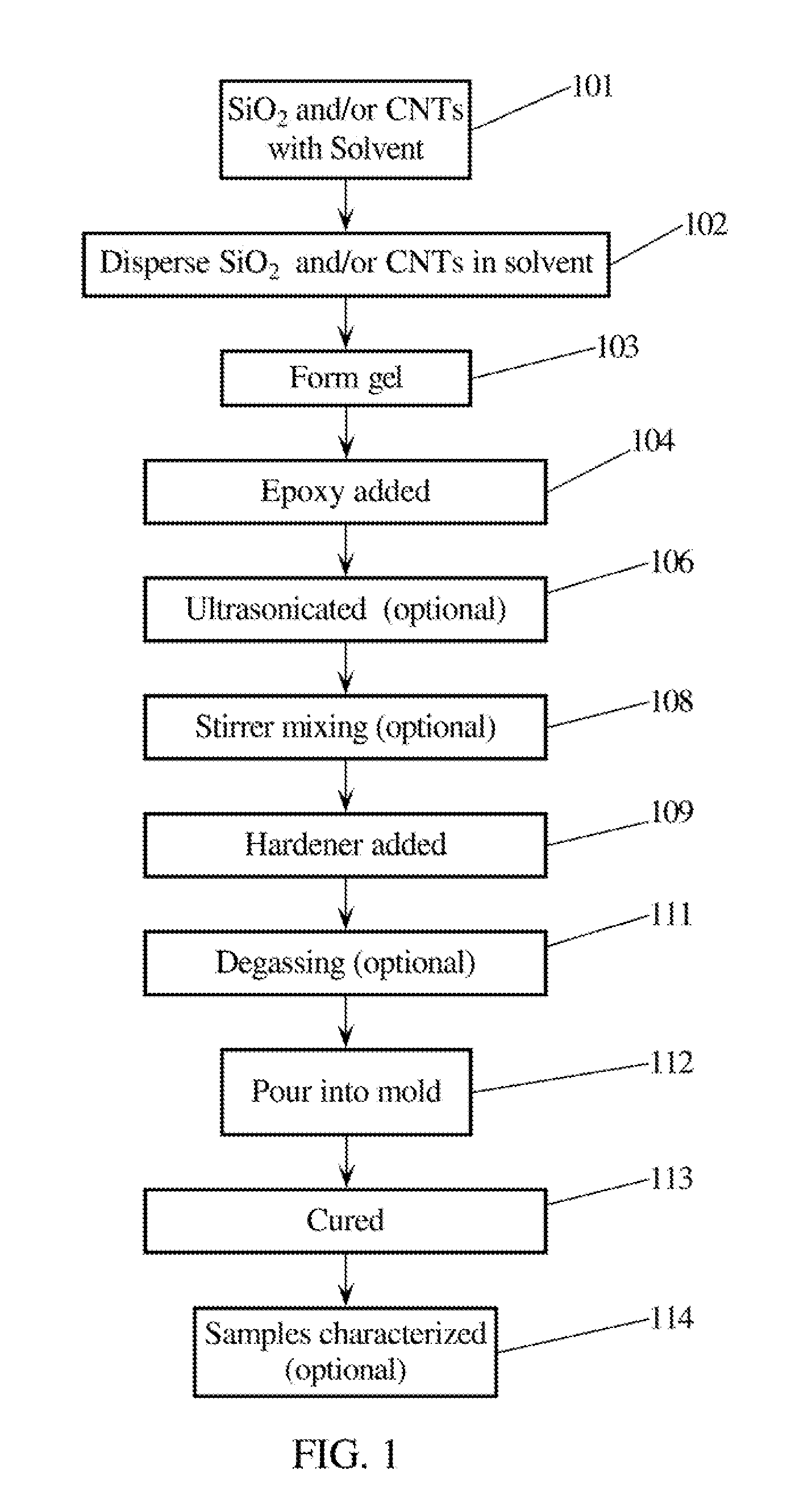Polymer Composites with Silicon Dioxide Particles
a technology of sio2 particles and polymer composite materials, which is applied in the field of polymer composite materials with sio2 particles, can solve the problems of nanoclay platelets and particles re-agglomeration, high difficulty in achieving complete exfoliation, and limited hardness and modulus improvement, so as to achieve excellent properties and maximize bonding
- Summary
- Abstract
- Description
- Claims
- Application Information
AI Technical Summary
Benefits of technology
Problems solved by technology
Method used
Image
Examples
Embodiment Construction
[0008]Embodiments of the present invention combine CNTs, clay, and other types of fillers, in various combinations, to significantly improve the overall mechanical properties of polymer materials. This application is related to U.S. Pat. No. 8,129,463, and U.S. Published Patent Application No. 2010 / 0285212, which are hereby incorporated by reference herein.
[0009]Part I: CNTs, SiO2, Epoxy, and Hardener
[0010]The thermostat polymer used was epoxy. Besides SiO2 particles, the other type of the particles used was MWNTs. MWNTs were commercially obtained from Bayer Material Science. Those CNTs may be highly purified. They were functionalized with carboxylic (COOH—) functional groups. Carboxylic-functionalized CNTs improve the bonding between the CNTs and epoxy molecular chains, which can further improve the mechanical properties of the nanocomposites. Pristine CNTs or functionalized by other ways (such as amino functional groups) may also be utilized. DWNTs and / or SWNTs may also be utilize...
PUM
| Property | Measurement | Unit |
|---|---|---|
| wt. % | aaaaa | aaaaa |
| wt. % | aaaaa | aaaaa |
| wt. % | aaaaa | aaaaa |
Abstract
Description
Claims
Application Information
 Login to View More
Login to View More - R&D
- Intellectual Property
- Life Sciences
- Materials
- Tech Scout
- Unparalleled Data Quality
- Higher Quality Content
- 60% Fewer Hallucinations
Browse by: Latest US Patents, China's latest patents, Technical Efficacy Thesaurus, Application Domain, Technology Topic, Popular Technical Reports.
© 2025 PatSnap. All rights reserved.Legal|Privacy policy|Modern Slavery Act Transparency Statement|Sitemap|About US| Contact US: help@patsnap.com

